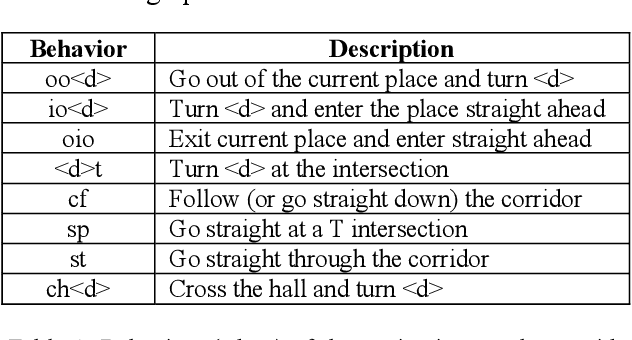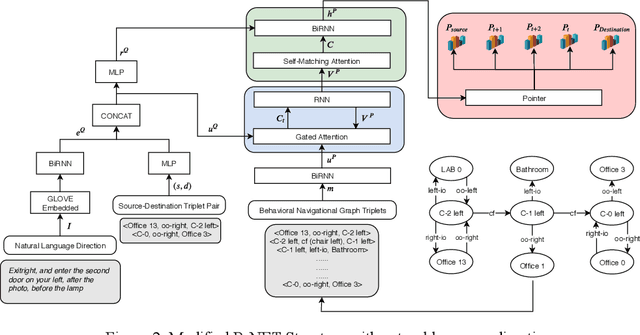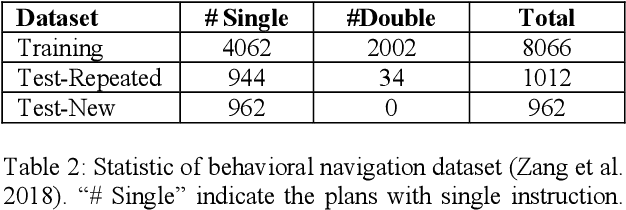High-Level Plan for Behavioral Robot Navigation with Natural Language Directions and R-NET
Paper and Code
Jan 08, 2020



When the navigational environment is known, it can be represented as a graph where landmarks are nodes, the robot behaviors that move from node to node are edges, and the route is a set of behavioral instructions. The route path from source to destination can be viewed as a class of combinatorial optimization problems where the path is a sequential subset from a set of discrete items. The pointer network is an attention-based recurrent network that is suitable for such a task. In this paper, we utilize a modified R-NET with gated attention and self-matching attention translating natural language instructions to a high-level plan for behavioral robot navigation by developing an understanding of the behavioral navigational graph to enable the pointer network to produce a sequence of behaviors representing the path. Tests on the navigation graph dataset show that our model outperforms the state-of-the-art approach for both known and unknown environments.
 Add to Chrome
Add to Chrome Add to Firefox
Add to Firefox Add to Edge
Add to Edge